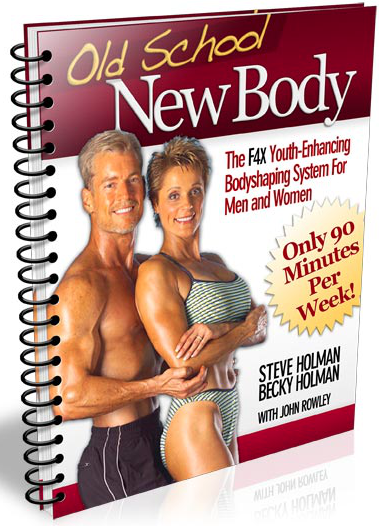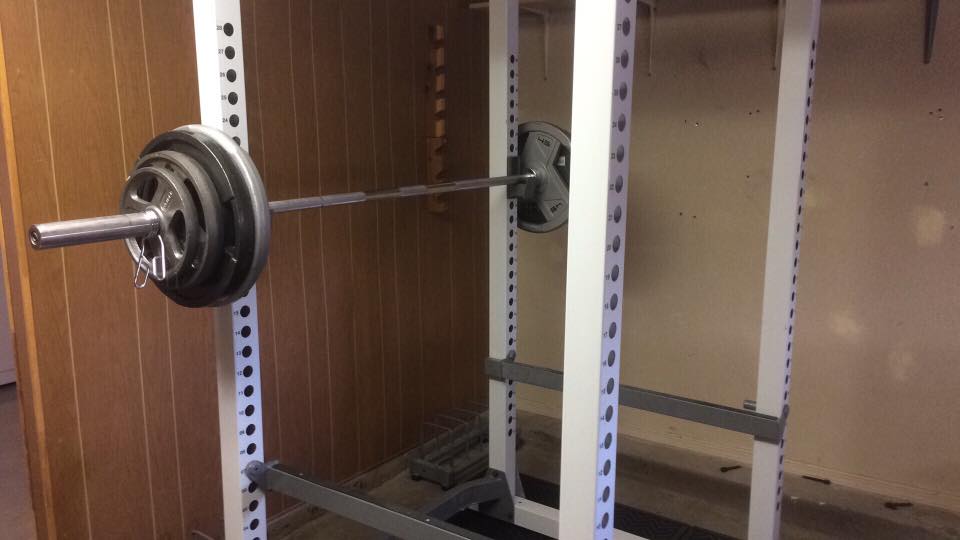Introduction:
I have had the opportunity to review an extremely popular program called Old School, New Body by John Rowley and Steve/Becky Holman. This is a system designed for men and women who want to stay in shape or get back in shape. I’m interested in this program for a couple of reasons:
I’m in my mid-40’s and I’m interested in maintaining a high level of strength and fitness for years to come. I’m always on the lookout for training and diet information designed for more mature trainees.
One of the major health issues we face here in the West is sarcopenia–the decline of strength and muscle that occurs with aging. Some of this is inevitable, but lifestyle choices do worsen/accelerate the problem. I can tell you from personal experience that it is possible to look and feel much younger than your chronological age. I’d like to see more men and women enjoying a healthy, high energy lifestyle in their 40’s and beyond.
With this in mind let me share with you what you will get if you order the Old School, New Body program. Keep in mind that these are all digital products–they are quickly and easily downloaded from the website if you decide to order this program.
Program Components:
Old School, New Body Main Guide: This E-book is your guide to the overall history and philosophy of the program. According to Rowley, he and Steve ran across some of the training journals of the legendary Vince Gironda. Gironda was a trainer to many Hollywood celebrities in the 60’s, 70’s, and 80’s. He was a man that was truly ahead of his time.
These training journals inspired John and Steve to do more research and eventually created the Focus-4 Exercise protocol (F4X). These workouts make it possible to build muscle and burn fat while minimize the wear and tear on joints (something older trainees have to be more conscientious about). Another beauty of this system is that you don’t have to spend hours in the gym every day. You can, in fact, maintain a high level of fitness by training only three days a week and adjusting your diet. The book gives several examples of success stories–those who have used this system to stay in shape.
Here’s one thing you may find surprising about Old School, New Body: even young people can benefit from these workouts. The authors have seen 19 and 20-year-olds transform their physique with these training techniques.
Needless to say, there’s a lot more I could share about this manual. But hopefully this gives you a pretty decent idea of what the authors hope you can accomplish by applying this system.
Quick Start Workout Guide: This document will guide you through the F4X workouts. It is divided into four different phases. The first is called Lean workouts–these are the beginner level workouts that will help you get started on your fitness journey. The second phases is called Shape workouts, designed for those who are ready for more intensive training. The third phase is called Build. This phase is for those who want to add some muscle after building the foundation from previous phases.
Ultimate Fat Burning Secrets: This E-book includes some additional fat loss tips that you may find helpful. The key to fat loss, of course, is a negative calorie balance. But you’ll learn some extra things from reading through this document. Here’s one example: those who eat diets higher in protein tend to be more successful at weight loss. Protein helps you to feel full and keeps you from eating other more high calorie foods.
Ultimate Muscle-Building Secrets: Like the previous book, this one includes some additional information to help you build muscle. The authors mention different supplements, for example, that you may want to consider adding to your regimen. One example is taking 400 milligrams of magnesium before you to bed. This mineral is helpful for keeping cramps away and may help you relax and sleep better
Ultimate Sex and Anti-Aging Secrets: This is another E-book/manual with helpful information: supplements, dietary adjustments, etc.
Ultimate Health and Happiness Secrets: This E-book is a little bit different than the others because it includes some tips on the psychological/mental aspects of life in addition to the physical.
MP3 Interviews: you can also download interviews with fitness experts–you’ll hear some of their insights on staying healthy and happy.
Review:
As I mentioned before, I’m interested in diet and training information that can help with both longevity and the quality/vitality of life. I think that Old School, New Body is a good program for those in search of this kind of resource. Let me tell you who I think would most benefit from this program:
Older adults (middle-aged and up) who wish to improve their level of health and vitality. I think this is a great program for those who wish to lose fat, gain muscle, and become more energetic. One of the beauties of this program is you can do so without worrying about trying to lift heavy weights.
Younger trainees who want a break from heavy lifting may also enjoy this program. It would be useful to follow for a few weeks to let your joints recover.
If either of these descriptions sound like you then I think Old School, New Body is definitely worth a try. It is not expensive and available for download as soon as you purchase it. Just CLICK HERE if you’d like to order this program or learn more.

